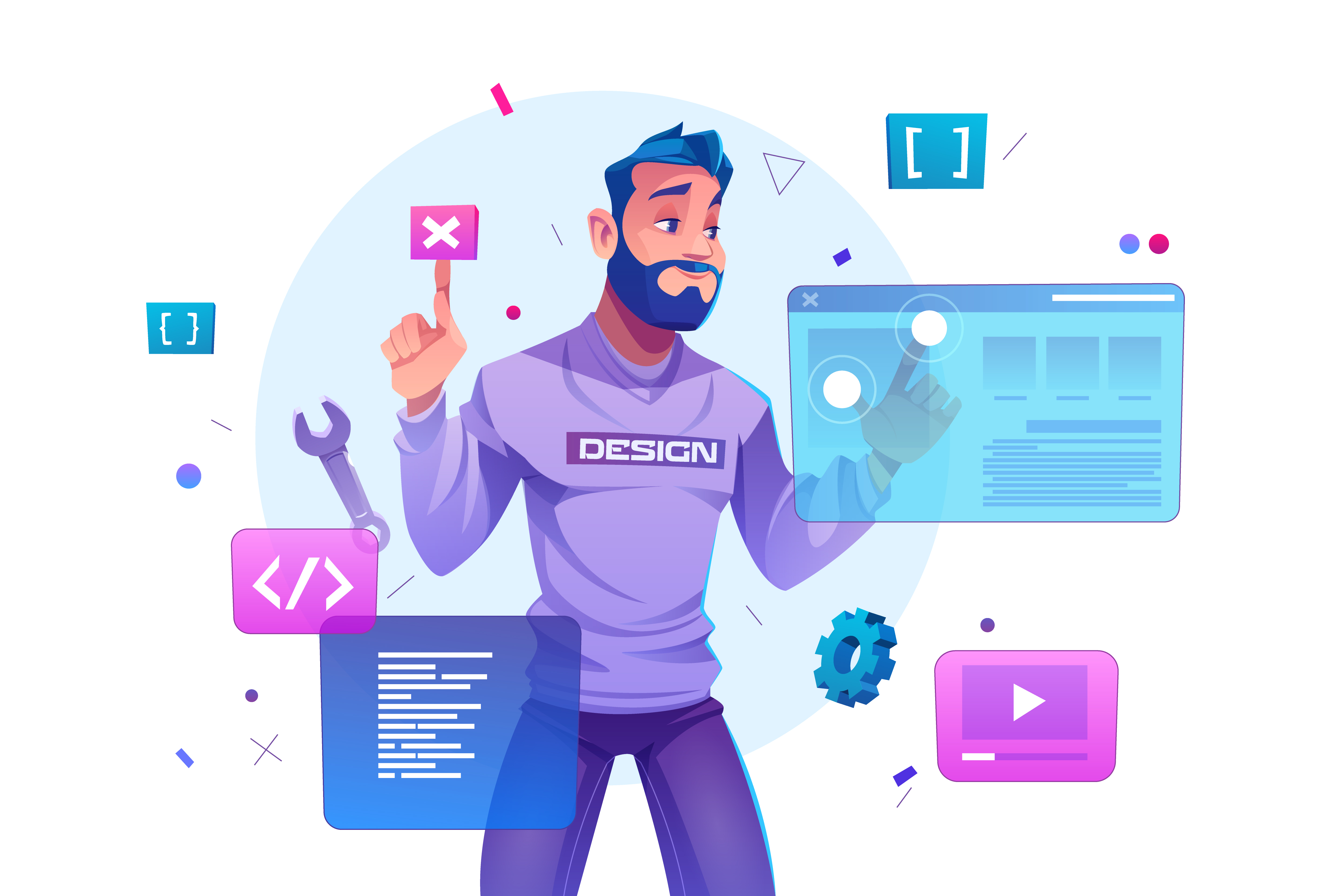Upskilling Frontend Development to the Next Level
 Dev Mankad
Dev Mankad
The world of frontend development is evolving rapidly, with user expectations for seamless experiences and visually stunning interfaces growing higher by the day. To stay ahead, it’s essential to upskill with advanced tools and methodologies that deliver cutting-edge designs and interactions. This blog explores advanced techniques using ReactJS, React Native, Material UI, Framer Motion, Tailwind CSS, and Figma, while emphasizing the importance of animations, UI design, collaboration, and user-centric thinking.
The Power of Animations in Frontend Development
Animations are no longer just embellishments; they play a critical role in improving usability, guiding user attention, and enhancing overall user satisfaction.
Why Animations Matter
Improved Navigation: Subtle transitions and micro-interactions can help users understand the flow and hierarchy of a website or app.
Example: Animating a button press using Framer Motion to provide instant feedback.Enhanced User Engagement: Motion increases visual appeal, making users more likely to stay engaged.
Example: Dynamic content loaders with Material UI spinners keep users informed and entertained.Storytelling through Design: Animations can convey brand identity and product narratives in a way static designs cannot.
Example: Using parallax scrolling with React libraries to guide users through a product journey.
When to Use Animations
To Guide User Actions: For instance, use animation to highlight a newly added item to a shopping cart.
Avoid Overloading: Use sparingly to avoid slowing down the website or distracting users from their goals.
Keep It Contextual: Match the animation style to your app’s personality (e.g., playful for a kids’ app, minimal for a corporate tool).
Tool Spotlight: Framer Motion
This powerful library allows you to create smooth animations with React components. For example:
<motion.div
initial={{ opacity: 0 }}
animate={{ opacity: 1 }}
transition={{ duration: 0.5 }}
>
Welcome to the future of frontend!
</motion.div>
Leveraging UI Designs from Dribbble and Behance
Frontends shine when paired with exceptional design. Platforms like Dribbble and Behance are treasure troves of inspiration.
Trendspotting: Analyze trending designs to keep your interfaces fresh and relevant.
Custom Adaptations: Take inspiration but ensure designs are tailored to your project’s needs.
Rapid Prototyping: Translate mockups from Figma into pixel-perfect code using Material UI or Tailwind CSS.
Pro Tip: Use Figma's collaborative features to align with designers, and tools like Tailwind CSS for consistency in design systems.
Collaboration: The Key to Frontend Excellence
Frontend development thrives on collaboration. Whether it’s syncing with designers, back-end developers, or stakeholders, teamwork ensures your project stays aligned with goals.
Designer-Developer Sync:
Use tools like Figma for real-time collaboration and component sharing.
Translate design tokens directly into Tailwind CSS configurations for consistent theming.
Cross-Disciplinary Input:
Collaboration extends beyond code and design. Involve product managers to ensure features align with user needs.Feedback Loops:
Incorporate iterative feedback from QA teams and beta users to refine experiences.
Thinking with a User Experience Perspective
The best frontends solve real problems. Every decision—from typography to animations—should enhance usability and delight the end user.
UX Best Practices
Accessibility First: Ensure animations and designs don’t hinder screen readers or keyboard navigation.
Performance Optimization: Use lazy loading and responsive design principles to ensure your frontend runs smoothly on all devices.
Consistent Branding: Maintain a coherent style guide to foster brand recognition across platforms.
Example Workflow
Start with user personas to identify core needs.
Collaborate with designers in Figma to prototype solutions.
Build responsive layouts using Tailwind CSS for speed and flexibility.
Enhance with animations using Framer Motion.
Test with real users and iterate based on feedback.
Taking the Leap: Upskilling with Advanced Tools
ReactJS + React Native: Build versatile, reusable components for web and mobile.
Material UI: Create visually consistent and accessible designs quickly.
Framer Motion: Make every interaction delightful and intuitive.
Tailwind CSS: Build utility-first designs for unparalleled speed.
Figma: Collaborate effectively and turn ideas into tangible designs.
Conclusion
Upskilling your frontend skills isn’t just about mastering new tools—it’s about adopting a mindset of continuous improvement and collaboration. With the right tech stack and approach, you can create experiences that resonate with users, boost engagement, and elevate your craft to the next level. So, dive in, experiment, and let your creativity shine!
Happy coding! 🚀
Subscribe to my newsletter
Read articles from Dev Mankad directly inside your inbox. Subscribe to the newsletter, and don't miss out.
Written by

Dev Mankad
Dev Mankad
DevOps enthusiast and cloud aficionado | Sharing insights and expertise on all things DevOps and Cloud | Join me on a journey of continuous learning and innovation | Let's unlock the true potential of modern engineering together | Connect with me to explore the exciting intersection of DevOps and Cloud!